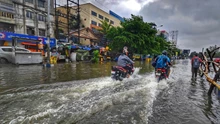
The two main dangers to a plant are pests and diseases. Over the past 20 years, they have destroyed billions of plants in both urban and rural areas throughout the world. Additionally, they cost the world's agriculture yearly billions of pounds.
Pests and insects have the potential to negatively and destructively affect agricultural productivity, market access, the environment, and our way of life. They are a major concern as they have the potential that can harm crops and food production, parasitize livestock, or even just bother people with health risks.
Damage-causing pests can be found in a wide variety of forms, sizes, and species, from common bed bugs (Cimex lectularius), which thrive on a diet of human blood, to cockroaches that consume sweets, starches, hair, and decaying debris. Some of the most dangerous are plant-eating pests that cause permanent harm to farm animals, humans, and agricultural output. One-fifth of the world's yearly agricultural yield is thought to be lost each year to herbivorous insects. Every year, farmers from across the world struggle with particular difficulties in an effort to protect their crops from competing insects and pests.
Here is a brief list of certain insects, pests, and bugs that cause huge loss to crop production.
Locusts
These small, short-horned bugs known for consuming almost anything that comes their way, made recent headlines when massive swarms of them invaded several Indian areas, destroying crops, posing a threat to human life, and seriously harming agriculture. Some locust species, such as the desert locust, can occupy an area of up to 460 square miles, with between 40 and 80 million of these insects crammed into a space smaller than half a square mile. Just picture the enormity of the harm they can do if not managed properly.
Aphids
Aphids, often referred to as ant cows or greenflies, are tiny, soft-bodied insects that feed on plant sap. They can seriously affect plants' general development and finally cause obvious damage. Certain plant kinds are vulnerable to specific aphid species, whereas older, established plants can stay mostly unaffected. They feed in groups and can reproduce swiftly, and eat a variety of plants, including beans, cabbage, potatoes, green peaches, and others. In reality, some aphid species would be exclusive to certain plants.
Bollworms
A cotton planter receives warning indications when a bollworm is discovered. But they have also been observed degrading tomatoes, soybeans, peanuts, chickpeas, sunflowers, and pigeon peas. When they are discovered, but are not monitored or controlled, they will grow and cause considerable harm to the harvest and production.
Mealybugs
These wingless, soft-bodied insects reduce the development of agricultural plants by draining the sap from their cells. Although the damage is not severe in the early stages, the microscopic insects' fast development can force them to cooperate in groups, which weakens plants and causes leaves to become yellow. These bugs are simple to identify because of the cottony masses they leave behind on stems, leaves, and fruits. Beans, cashew, cassava, coffee, cocoa, citrus, cotton, groundnut, guava, jute, sugarcane, sweet potato, tomato, apple and apricot are some of the crops attacked by mealybugs.
Stink bugs
When confronted by predators, stink bugs produce offensive odours as a sort of defense. They pose a severe danger to agriculture since they can consume more than 100 types of plants and crops, making them more than simply a nuisance for homeowners.
Stem borer
Stem borers are caterpillars that eventually develop into yellow or brown moths, which is how they kill. The loss of the center leaves (dead heart) and drying out of the panicle are two specific symptoms of the significant damage caused by stem borers to plant stems (white head). They assault, which causes substantial yield losses. Stem borers are among the most dangerous pests of grain crops in the world. Rice, sorghum, finger millet, maize, pearl millet, sugarcane, mango, fig, rubber, jackfruit, eucalyptus and mulberry are among the crops that are affected. They manage to reduce nearly 10-14% yield loss.
Thrips
Thrips (order Thysanoptera) are tiny, thin insects with fringed wings and distinctive asymmetrical mouthparts that are typically 1 mm long or less. Although certain species of thrips are predators, most thrips species feed primarily on plants by puncturing the tissue and sucking up the contents. Eggs are placed on or slightly under the tissues of the leaves. Adults and nymphs both cut the leaf tissues and ingest the oozing sap; occasionally, even the buds and flowers are also attacked. Infected leaves begin to twist and fall apart. Groundnut, cotton, chilies, roses, grapes, citrus, pomegranate, tea, grapevine, castor, and cotton are among the crops that are affected. 25–50% loss in yield can be seen in the crop infested by thrips.
How to control the spread of pests?
Plant damage from pests is a major concern throughout the globe. Here are some strategies to reduce the impact of these pests:
-
Cooperation on a global scale,
-
Management of prohibited or quarantined pests,
-
Preventing pests under quarantine from entering a nation or region,
-
Controlling and eradicating pests,
-
Use of biopesticides, pesticides, and biological control.











